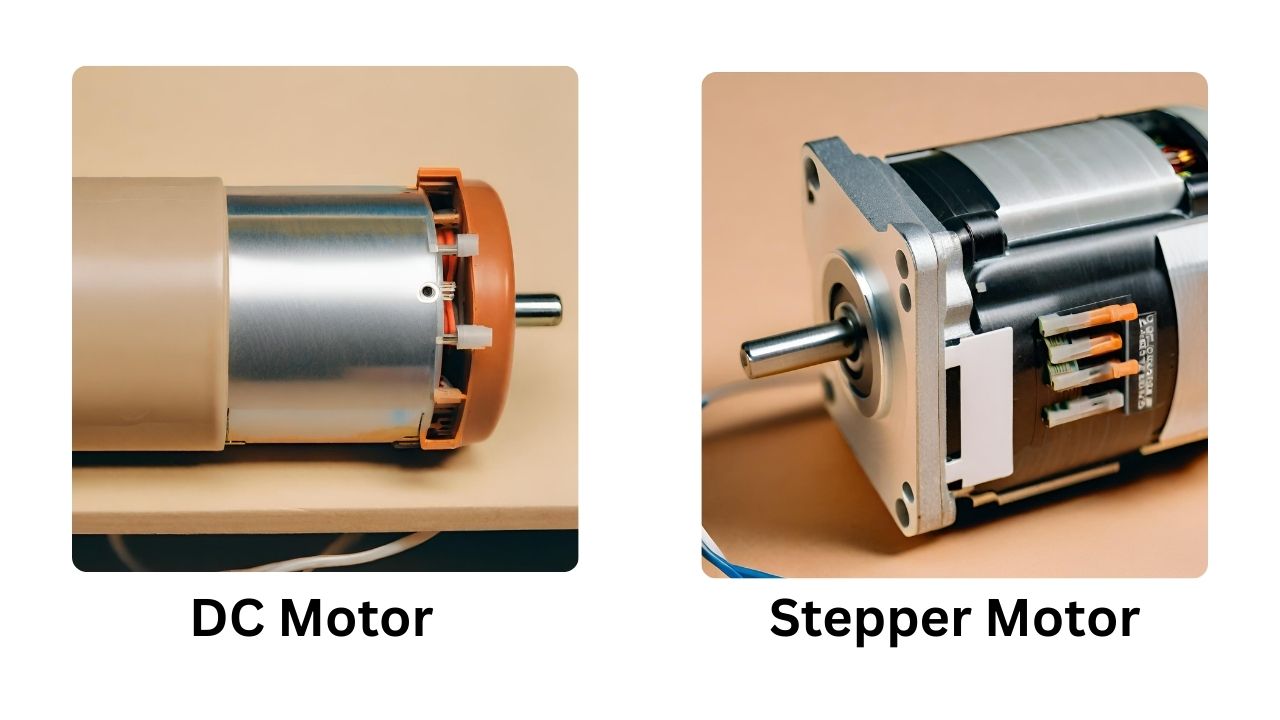When it comes to choosing the right motor for your project, understanding the differences between stepper motors and DC motors is crucial. Both have their unique advantages, but stepper motors often stand out due to their precision, control, and reliability. In this article, I’ll explain why stepper motors are often considered better than DC motors for many applications. We will cover their characteristics, advantages, and specific use cases where stepper motors outperform DC motors.
Understanding Stepper Motors and DC Motors
Before diving into the comparison, let’s briefly review what stepper motors and DC motors are.
Stepper Motors: These motors move in discrete steps, providing precise control over rotation. Each step represents a fixed angle of movement, allowing for exact positioning and repeatability without needing feedback systems.
DC Motors: Direct Current (DC) motors provide continuous rotation. Their speed is controlled by varying the voltage supply, making them suitable for applications requiring simple and fast rotation.
Also read: Stepper Motor Torque: What is the torque of a stepper motor?
Key Differences and Advantages
- Precision and Control
- Stepper Motors: Stepper motors excel in applications requiring precise positioning. They move in fixed increments, allowing for exact control over the shaft position. This makes them ideal for tasks where accuracy is critical, such as 3D printing, CNC machining, and robotics.
- DC Motors: While DC motors can achieve high speeds, they lack the inherent precision of stepper motors. Achieving precise control with a DC motor requires additional components like encoders and feedback systems, increasing complexity and cost.
- Repeatability
- Stepper Motors: The ability to repeat movements accurately is a significant advantage of stepper motors. Once calibrated, they can return to the same position consistently, ensuring reliable performance in applications like automated systems and industrial machines.
- DC Motors: DC motors can struggle with repeatability, especially in applications where the load varies. This can lead to inconsistencies and reduced reliability.
- Open-Loop Control
- Stepper Motors: Stepper motors typically operate in an open-loop system, meaning they do not require feedback to maintain position. This simplifies the control system and reduces costs.
- DC Motors: To achieve similar precision, DC motors often need closed-loop control systems with encoders and sensors, adding complexity and cost.
- Torque at Low Speeds
- Stepper Motors: Stepper motors provide high torque at low speeds, making them suitable for applications requiring strong, slow movements. This characteristic is particularly useful in applications like robotics and medical devices, where controlled movements are essential.
- DC Motors: DC motors generally have lower torque at low speeds. To achieve high torque, you often need gear reductions, which can increase size and complexity.
- Holding Torque
- Stepper Motors: One of the standout features of stepper motors is their ability to hold their position when stopped. This holding torque is beneficial in applications where maintaining a fixed position is crucial, such as in camera platforms and precision instruments.
- DC Motors: DC motors do not naturally provide holding torque. When stopped, they do not resist movement, which can be a drawback in applications requiring position stability.
- Complexity and Cost
- Stepper Motors: Despite their precision and control advantages, stepper motors can be simpler and more cost-effective to implement in certain applications. They do not require complex feedback systems and are often easier to program and control.
- DC Motors: While DC motors are straightforward in simple applications, achieving high precision and control can increase complexity and cost. The need for encoders, sensors, and feedback systems adds to the overall expense.
Also read: Stepper Motor RPM – How to Calculate?
Specific Use Cases
To illustrate the advantages of stepper motors over DC motors, let’s look at some specific use cases:
- 3D Printing: Stepper motors provide the precision needed to ensure each layer of a 3D print is accurately positioned. Their repeatability ensures consistent print quality, which is challenging to achieve with DC motors.
- CNC Machining: In CNC machines, precision and control are paramount. Stepper motors enable exact tool positioning, resulting in high-quality cuts and engravings.
- Robotics: For robots performing precise tasks, stepper motors offer the control necessary for accurate movements. Their ability to provide high torque at low speeds and hold positions makes them ideal for robotic arms and manipulators.
- Medical Devices: In medical equipment, such as infusion pumps and imaging devices, stepper motors ensure precise fluid control and accurate positioning, contributing to patient safety and effective treatment.
Conclusion
While DC motors have their place in many applications, stepper motors often provide superior precision, control, and reliability. Their ability to move in discrete steps, maintain position without feedback, and provide high torque at low speeds makes them the preferred choice for numerous high-precision tasks. Understanding these advantages can help you choose the right motor for your project, ensuring optimal performance and efficiency.
If you have any questions or need further information on stepper motors and their applications, feel free to reach out. I’m here to help you understand and make the most of this incredible technology.

